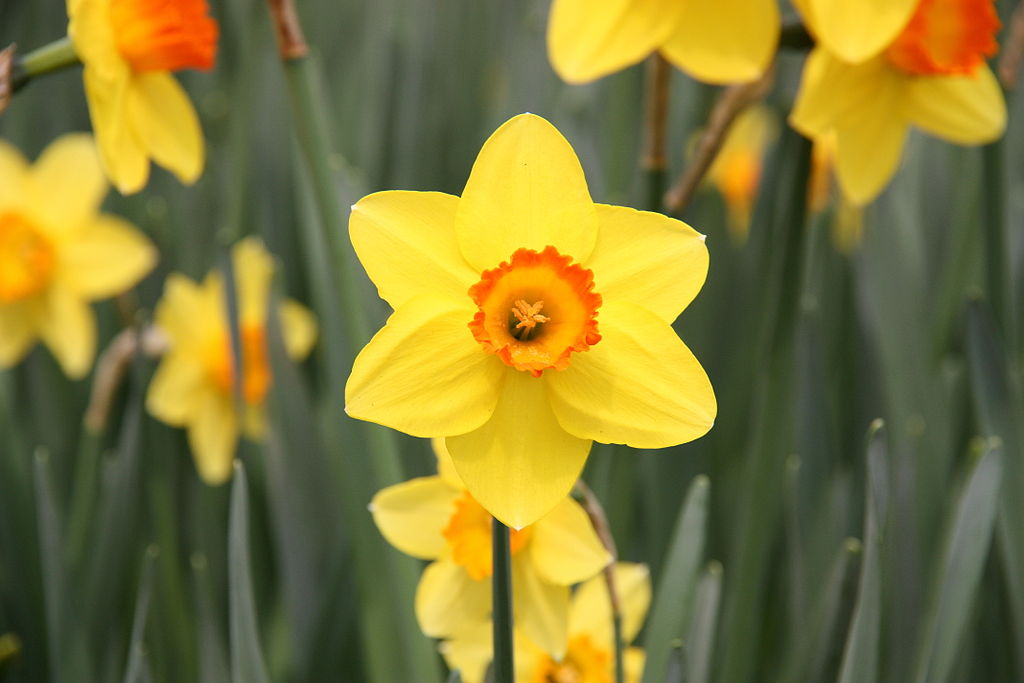Leave the leaves after blooms fade on daffodils, tulips

COLUMBIA, Mo. — What winter-weary heart is not thawed by the arrival of sunshine-yellow daffodils and colorful tulips? Unfortunately, once their blooms fade, these harbingers of spring are often relegated to afterthoughts, University of Missouri Extension horticulturist David Trinklein said.
After spring bulbs flower, their greatest work lies ahead, and they need care to ensure that they will return in full glory next year.
Gardeners need to encourage the spring bulbs after they’ve flowered to remain green and photosynthesizing for as long as possible, Trinklein said.
Nurturing spring bulbs
Spring-flowering bulbs include daffodils, tulips and hyacinths. Too often, people mow down their daffodils after they flower, and that’s a bad idea, Trinklein said. These cool-season plants need their leaves so they can photosynthesize until summer heat finishes them for the year. Photosynthesis lets the plant store food for next year’s flowers.
Rather than mow them down, some people will tie them up. Trinklein says that’s also a bad idea.
“When you tie them up into a column, only the outer leaves will get sunlight, and that light will be at a poor angle,” he said. “You might as well cut them off and suffer the consequences.”
Another thing that will help prepare spring bulbs for next year is to remove this year’s spent flowers.
“We don’t want the plant putting its energy into making seeds that you will not use,” Trinklein said.
Why not use the seeds? Trinklein says it will take three years or more before the plant grown from a seed will be mature enough to produce a flower. The seedling will also be genetically different from its parents, thanks to cross-pollination. The result will often be less than pleasing, he said.
This time of year, you need to feed spring bulbs as well.
In a press release, Trinklein said “After flowering, fertilize with something that’s high in phosphorus. Bone meal is an excellent organic choice for bulbs. Limit nitrogen, because too much can lead to bulb rot.”
If you would rather use an inorganic fertilizer, Trinklein recommends 5-10-5, which is relatively low in nitrogen, high in phosphorus and has modest amounts of potassium.
Avoid transplanting these bulbs in the spring. Even if you’re very careful, you will lose roots when transplanting, Trinklein said. In the spring, we need all the roots on the plant so they can take up nutrients to create next year’s flower.
Spring-flowering bulbs vs. Missouri heat
Spring-flowering bulbs are not native to Missouri and differ in their ability to adapt, or naturalize, to our conditions. Some species are better at this than others.
“Because of their ability to tolerate warmer temperatures, daffodils are the best at naturalizing in Missouri,” Trinklein said. “They do a fairly decent job of enlarging the bulb clump and remaining attractive year after year.”
Tulips are a step down in being happy under Missouri conditions because it gets warm in the spring rather quickly, Trinklein said.
When it comes to naturalizing in Missouri, the worst of the three is hyacinth, which cannot tolerate warm weather. Trinklein says you’ll get beautiful, large columnar scapes packed full with hyacinth florets the first year.
“Thereafter, they will go downhill,” Trinklein said. “Under Missouri conditions, they will rarely regain their original beauty. For this reason, hyacinths are sometimes treated as annuals.”
Miss Clipping Out Stories to Save for Later?
Click the Purchase Story button below to order a print of this story. We will print it for you on matte photo paper to keep forever.

